An ongoing legacy: Smith College celebrates its 150th anniversary this year
| Published: 02-14-2025 11:41 AM |
It’s no small feat to celebrate a 150th birthday. In 2025, Smith College is commemorating the sesquicentennial anniversary of its founding with programming throughout the year to celebrate the legacy and history of the women’s college.
In addition to its 150th anniversary, the college is also celebrating the 50th year of its Ada Comstock Scholars Program, which allows women older than traditional college age to earn an undergraduate degree, and the 130th anniversary of the Smith College Botanic Garden.
“In examining our past, we have the opportunity to envision a future Smith that leans even more deeply into its mission, that is more intellectually and creatively engaging, and that prepares graduates who are unafraid of difference or challenge, are curious throughout their lives, and who will insist on our mutual humanity,” wrote Smith College President Sarah Willie-LeBreton in a letter to the community this year. “What Smith becomes in its next century and a half will be shaped by our work together today.”
The school was born not long before its founder’s death. On March 8, 1870, a few months before she passed away, Sophia Smith signed the final version of her will. The majority of it was about the provisions for what she called “The Smith College,” paid for with a bequest of nearly $400,000 — a minuscule fraction of the college’s current endowment, $2.6 billion. It was to be a school “with the design to furnish for my own sex means and facilities for education equal to those which are afforded now in our Colleges to young men.”
“It is my opinion,” Smith wrote, “that by the higher and more thorough Christian education of women, what are called their ‘wrongs’ will be redressed, their wages adjusted, their weight of influence in reforming the evils of society will be greatly increased, as teachers, as writers, as mothers, as members of society, their power for good will be incalculably enlarged.”
Sophia Smith required the school to have equal (or nearly equal) numbers of male and female teachers, and that the female teachers should have just as much influence in leadership decisions as the men. (It wasn’t until 1975 — a century after it opened — that Smith College got its first female president, Jill Ker Conway.) Sophia Smith didn’t want the college to “render my sex any the less feminine,” but, instead, to “develop as fully as may be the powers of womanhood, and furnish women with the means of usefulness, happiness and honor, now withheld from them.”
Smith College began its first semester in September 1875 with a class of 14 students and six faculty members. Sophia Smith had ordered the college to create programs of study in subjects one might expect of the time, including “higher culture in the English Language and Literature,” “Intellectual, Moral and Aesthetic Philosophy,” and “the Sciences and Arts, which pertain to Education, Society, and Government,” among others, with Scripture studied “daily and systematically.”
Today, the college has more than 2,500 undergraduate students and nearly 300 professors throughout 51 academic majors — to say nothing of its minors, graduate programs, concentrations, or special programs. About 100,000 alumnae (about 52,000 of whom are still living) have graduated from the school so far, among them Sylvia Plath, Gloria Steinem, Betty Friedan, Julia Child, Madeleine L’Engle, Sen. Tammy Baldwin, and many others. The current mayor of Northampton, Gina-Louise Sciarra, is the first Smith alumna to hold her position. Sciarra, who graduated in 1996, told the Smith Alumnae Quarterly in 2023, “Smith encouraged me to speak my mind and to think critically. Without a doubt, I use these critical thinking skills every day. Smith also taught me to be open and to listen to different points of view and be able to have an open mind and take in information in many ways — but then also to have a center of core values and be able to defend them.”
Article continues after...
Yesterday's Most Read Articles
 Northampton Housing Authority boss placed on leave
Northampton Housing Authority boss placed on leave
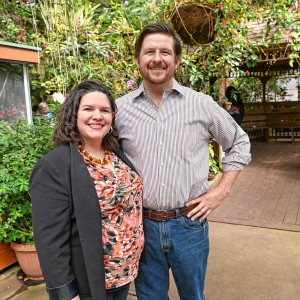 Hopeful buyers emerge for Magic Wings butterfly conservatory in South Deerfield
Hopeful buyers emerge for Magic Wings butterfly conservatory in South Deerfield
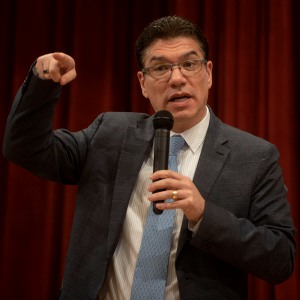 UMass Chancellor Reyes outlines changes amid financial uncertainty under Trump administration
UMass Chancellor Reyes outlines changes amid financial uncertainty under Trump administration
 Ready to roll on roads: Amherst priority list tees up $4.55M to rebuild some of town’s worst stretches
Ready to roll on roads: Amherst priority list tees up $4.55M to rebuild some of town’s worst stretches
 UMass hockey: Minutemen fall to Western Michigan, 2-1, in Fargo Regional final
UMass hockey: Minutemen fall to Western Michigan, 2-1, in Fargo Regional final
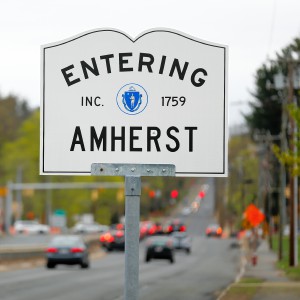 Amherst School Committee OK’s budget with no classroom layoffs, but spending plan is $500K more than town recommends
Amherst School Committee OK’s budget with no classroom layoffs, but spending plan is $500K more than town recommends
One of the college’s longest-serving employees, Amy Holich Moscaritolo, has seen Smith through 40 years of growth and change, both firsthand and through her family members — her parents, sister, and first husband were all employees, too. Moscaritolo, the assistant director of alumnae and donor events, has witnessed both a changing physical landscape — older buildings replaced with contemporary ones, for example — and technological shifts, like a move from a school-wide steam heating system, considered cutting-edge in the 1940s, to the college’s more recent geothermal project, which aims to make Smith carbon-neutral by 2030.
“I hope that 100 years from now,” she said, “people will look back and say, Smith was doing this really cool stuff then, and they’re doing this really cool stuff now.”
Moscaritolo began her degree at Greenfield Community College and later finished it as an Ada Comstock Scholar, class of 2005. At Smith, she said, “I learned how to think. I learned how to think critically and ask questions and not just take everything at face value, and gosh, do we need that now, in our culture, in our society — we need critical thinkers. In every part of the country, in every part of the world, in every part of life, we need people who ask questions and seek the truth and want to be part of a better world.”
For 13 years, Moscaritolo was responsible for planning Reunion, a tradition almost as old as the college itself, which brings alumnae back to Smith at the end of (or very soon after) the school year. One of its highlights is the Alumnae Parade, where alums wear all-white outfits, each with a sash of a different color, depending on their class year. Some participants carry signs relating to their age or class year, with slogans that are humorous (“From chasing shots to chasing tots”) or poignant (“1973 / Right to Choose / 2023 March again / Resolve not to lose”), making the parade a microcosm of the college’s history through generations.
Smith’s current president, Sarah Willie-LeBreton, said the college’s staying power has come from responding to larger needs. At the time of its founding, she pointed out, the country was a few years removed from the Civil War, and women still had decades to go before they could legally vote. With that, she said, “The acknowledgment that women were human beings, needed a robust education, deserved to have one, was really meeting a need of the time.”
A century and a half later, women now have many of the rights and freedoms denied them in the 1870s, but that doesn’t undercut a need for single-sex education.
“When I took the job, a number of people said to me, ‘Really? A women’s college? Still necessary?’” she said. “But I think with the, frankly, attacks on women’s ability to make their own healthcare choices, the really clear evidence that women tend to learn more effectively in classrooms where they’re in the majority and where their professors assume they can do the work, and the moral clarity that the college has about the importance of making sure that a first-rate, rigorous, extraordinary education is available to young women today – [that] answers that question.”
Likewise, the school’s biggest social shifts through its history have followed the larger culture — increased activism during the Vietnam War, for example. After all, part of Smith’s modern reputation has to do with its queer-friendliness and leftist activism, a notable evolution from an institution explicitly established with the intent that it would be “pervaded by the Spirit of Evangelical Christian Religion.”
As Smith continues through its next 150 years, President Willie-LeBreton said, its challenges will include many of the same issues that any liberal arts college has to deal with — the ongoing evolution of AI, for example, and a governmental fight against diversity and inclusion – but she remains confident that the college will weather future storms.
“I feel pretty clear that we will work this out and that Smith will continue to stand by its mission and its values,” she said. “We like the trajectory that we’re on. It’s legal. It’s moral. It’s ethical. And we are graduating extraordinary people every single year.”
Among the events celebrating Sophia Smith and her legacy this year is a new holiday, Founder’s Day, on Saturday, March 8 — which, by a lucky coincidence, is also International Women’s Day. The day’s programming will include a lecture about the college’s history and connections to Northampton by Historic Northampton co-director Laurie Sanders, herself a Smith alum, along with Mayor Sciarra.
Most of the other events the college lists as “highlights of the sesquicentennial year” are annual traditions anyway — Rally Day, the Bulb Show, Celebrating Collaborations, Commencement — but this year brings a few more new (or newish) celebrations as well. In April, the school will celebrate its second annual Smith Arts Day in honor of the school’s artistic community. In October, Smith will both dedicate a new career center named after the college’s second most recent president, Kathleen McCartney, and celebrate the 25th anniversary of Meridians, a journal of scholarship by and about women of color. Throughout the month, it will feature programming dedicated to the theme “Come Home to Smith.”
When Sophia Smith wrote her will, she said: “It is my wish that the Institution be so conducted, that during all coming time it shall do the most good to the greatest number. I would have it a perennial blessing to the country and the world.”
As some other women’s colleges have shuttered or gone co-educational to survive, Smith has stayed resolutely open; members of the class of 2027 were chosen from nearly 10,000 applications, one of the school’s largest applicant pools ever (a key factor in that growth: the school pivoted to grants-only financial aid a few years ago). As the school continues to educate women, President Willie-LeBreton said, the relevance of Smith College – and women’s colleges more broadly – is clear: “We don’t even have to make the argument.”
Carolyn Brown, who graduated from Smith College in 2016, can be reached at cbrown@gazettenet.com.


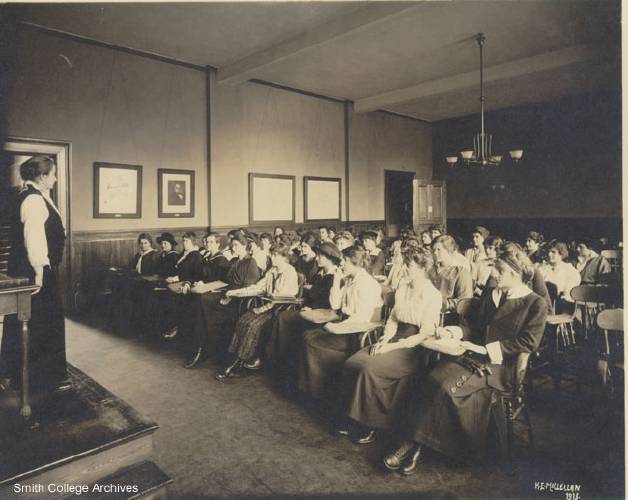
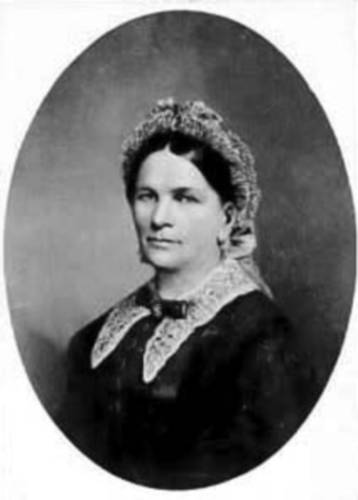
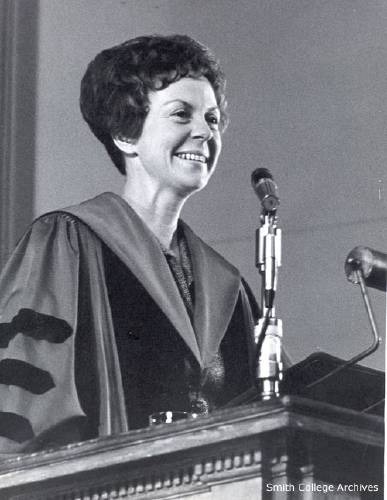
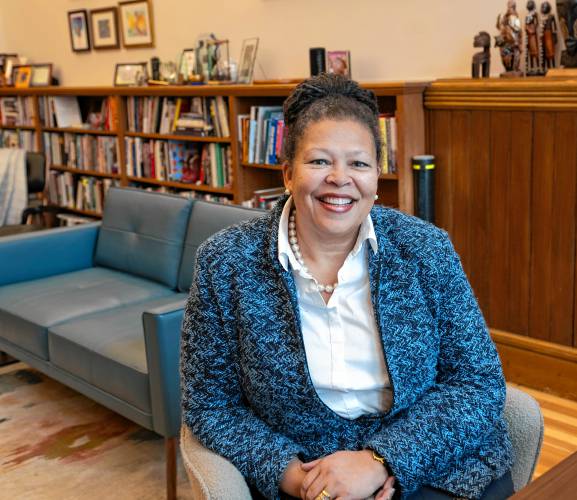
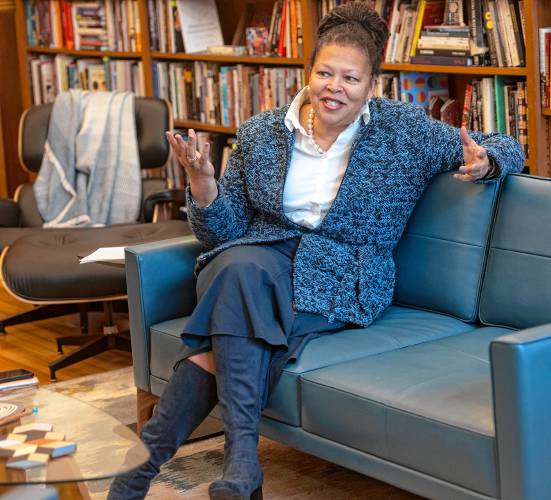
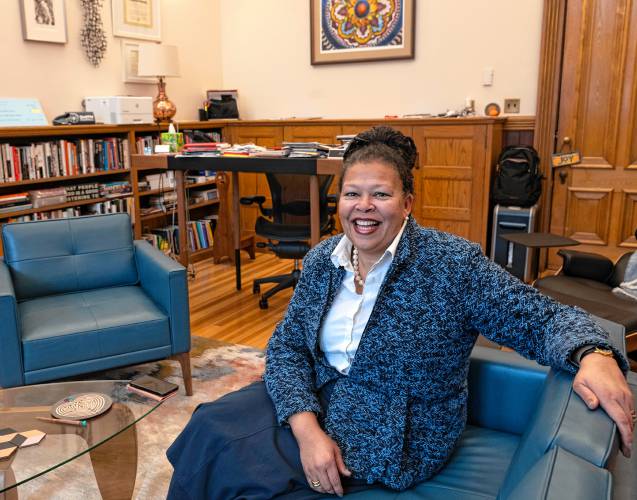





 Historic speech echoes two centuries later: ‘A Light Under the Dome’ recalls the first American woman to speak to a legislative body
Historic speech echoes two centuries later: ‘A Light Under the Dome’ recalls the first American woman to speak to a legislative body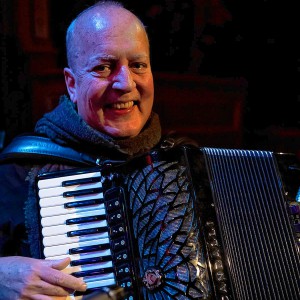 ‘His notes will linger forever’: Remembering Young@Heart accordionist and Springfield College professor Chris Haynes
‘His notes will linger forever’: Remembering Young@Heart accordionist and Springfield College professor Chris Haynes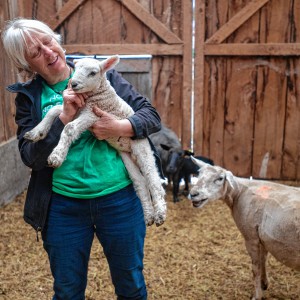 Valley Bounty: And on that farm she had a bit of everything: Little Brook Farm in Sunderland is a labor of love for farmer Kristen Whittle
Valley Bounty: And on that farm she had a bit of everything: Little Brook Farm in Sunderland is a labor of love for farmer Kristen Whittle Women’s history told through clothing: Shelburne Falls Area Women’s Club to host ‘Real Clothes, Real Lives: 200 Years of What Women Wore’ author, April 9
Women’s history told through clothing: Shelburne Falls Area Women’s Club to host ‘Real Clothes, Real Lives: 200 Years of What Women Wore’ author, April 9
